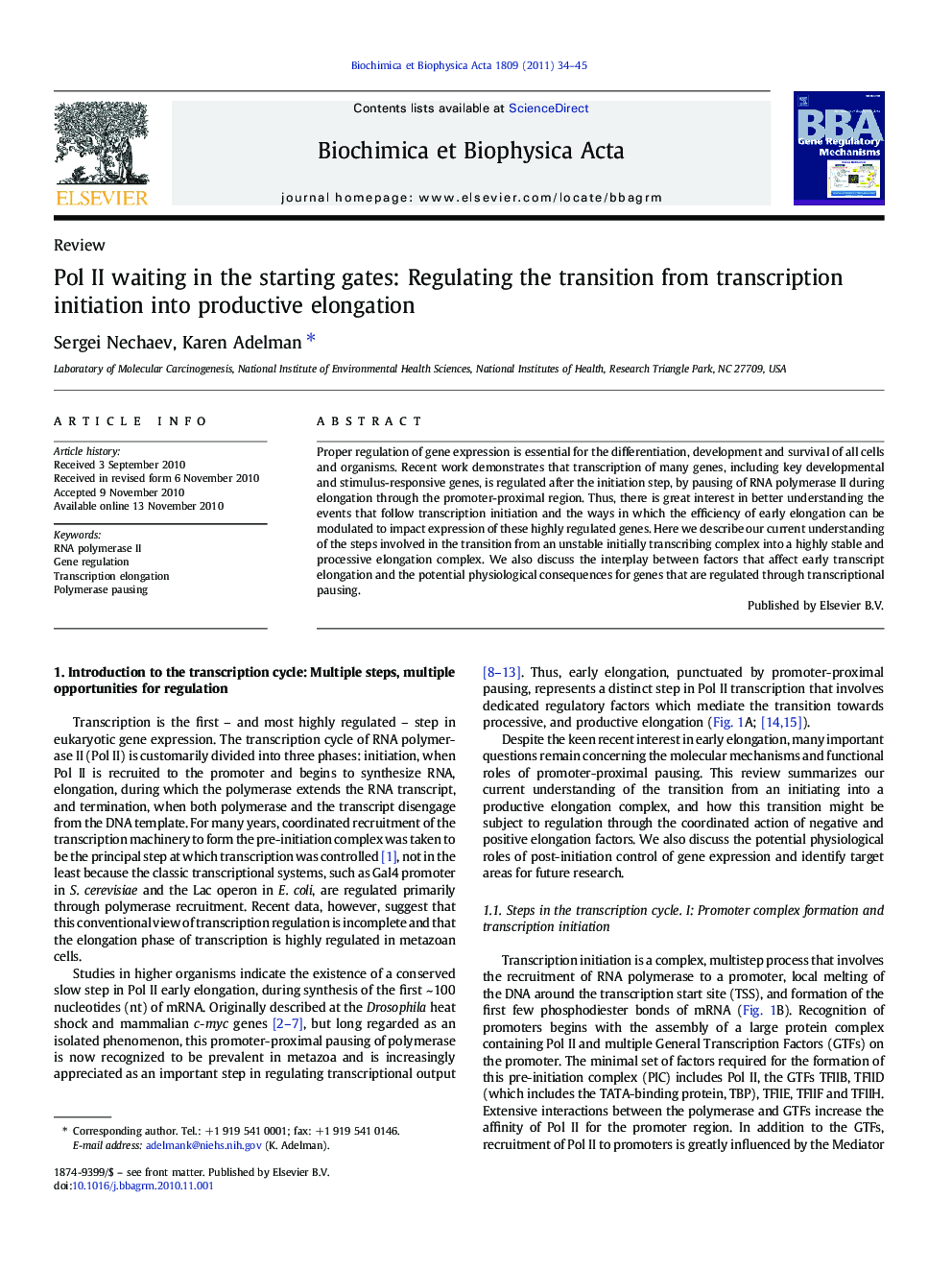| Article ID | Journal | Published Year | Pages | File Type |
|---|---|---|---|---|
| 1946719 | Biochimica et Biophysica Acta (BBA) - Gene Regulatory Mechanisms | 2011 | 12 Pages |
Proper regulation of gene expression is essential for the differentiation, development and survival of all cells and organisms. Recent work demonstrates that transcription of many genes, including key developmental and stimulus-responsive genes, is regulated after the initiation step, by pausing of RNA polymerase II during elongation through the promoter-proximal region. Thus, there is great interest in better understanding the events that follow transcription initiation and the ways in which the efficiency of early elongation can be modulated to impact expression of these highly regulated genes. Here we describe our current understanding of the steps involved in the transition from an unstable initially transcribing complex into a highly stable and processive elongation complex. We also discuss the interplay between factors that affect early transcript elongation and the potential physiological consequences for genes that are regulated through transcriptional pausing.
Research Highlights►Pausing during early elongation is a widespread mechanism for transcription regulation, occurring at active and inactive genes alike. ►The efficiency of early elongation is dictated by the interplay between positive and negative factors. ►Regulation of pause duration through recruitment of the Positive Transcription Factor b (P-TEFb) kinase is a general strategy for modulating gene expression. ►Pausing impacts the dynamics of gene activation and allows for synchronous “bursts” of transcription. ►Transcription output is likely determined by the balance between two potentially rate-limiting steps: Pol II recruitment to a gene promoter and release of Pol II from pausing.
